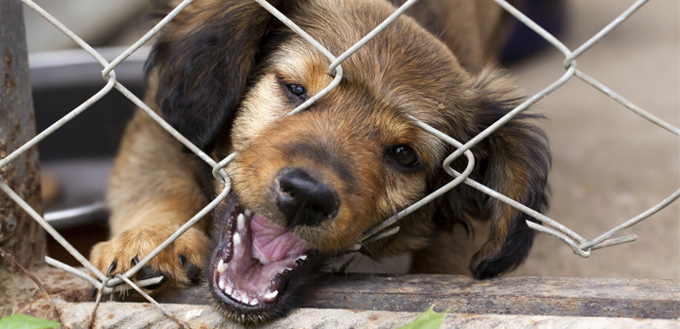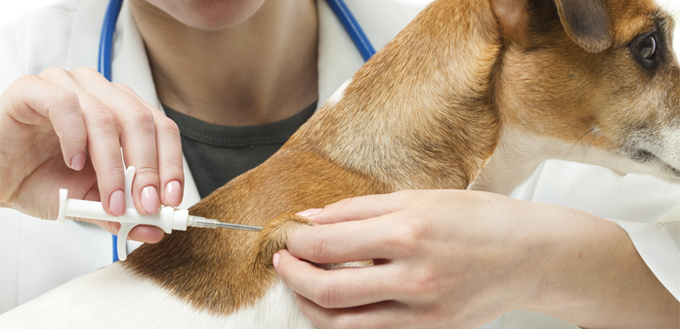Nothing could be more disconcerting than realizing one fine day that your beloved canine is no longer around. For most pet owners, it is virtually impossible even to even imagine what life would be like without their canine companion. It is probably the worst nightmare for every dog owner.
Losing your pet is akin to losing a family member. As a responsible pet owner, you are meant to look after the health and overall well-being of your pet, and this encompasses physical safety too. So, to ensure that all aspects are well taken care of, it is imperative to assume the worst and take a few precautionary steps. A smart way to ensure the safety of your canine friend is by maintaining a checklist that will minimize the chances of your dog getting lost. Besides being watchful, you can take a few more steps to ensure the safety and security of your pet.
Check out the following measures that you can use to avoid losing your pet dog:
Incorporate a Dog GPS Tracker
Dogs love adventure, and since you may not be in a position to accompany it outdoors multiple times during the day, there are bound to be times chances are that your pooch will wander outside on its own. It is at this time that your pet is at maximum risk to disappear without a trace.
![]()
Studies show that nearly 10 million cats and dogs are lost or stolen each year. Do not panic, because you can ensure your pet’s safety using a dog GPS tracker. With technology advancing at a fast pace, a variety of dog GPS trackers are available in the market. Each tracker comes with a unique set of features wherein it can accurately pinpoint the location of your pet. Some trackers are even enabled to display the history of locations that your pet visited. If your pet leaves your yard, there are trackers designed to warn you of your pet’s movement.
You will also find whistle GPS trackers for your dog, and also trackers that work on browsers. Such a tracker would allow you to create a safe zone for your pup. Every time your dog leaves the pre-determined safe zone, you would receive a notification through text or emails. These trackers help you locate your pet from an android or iOS phone.
In the era of smart phones and technology, tracking your run-away pet is not at all something to be worried about. All you need to do is to learn how these trackers work.
Pitching an Electric Dog Fence
Wireless fence or electric dog fence is another innovation to ease out your anxiety regarding pet security. While vets suggest taking your canine out for a walk, unleashing your dog in your yard is definitely an easier option. Pitching an invisible or electric fence is an ideal solution if your yard is bereft of a barrier or has one which is too low to keep your dog contained.

If your dog crosses the boundary line, the fence works by delivering a signal and a subsequent mild shock to your furry friend through a collar. These fences contain a transponder that sends an audio alert – a static warning – to the receiver’s collar. The wireless fence is not distance bound – it can cover large areas, almost up to an acre. The range can be increased by linking additional transponders.
Installing this fence is not difficult as it requires minimum tools and a bit of effort. Your dog will learn quickly to remain within boundaries to avoid warning signals and shock. It is user friendly too as it does not obstruct your view while ensuring that your dog enjoys secured play time.
Microchip
A microchip is not a tracking device and it does not require a power source like the GPS tracker. It is a radio frequency identification implant that provides the dog with permanent identification. If your dog gets lost, the microchip scan will provide data like name, owner’s contact information, and vet or shelter’s information.

Microchip has helped many pet owners in finding their lost dogs. It is minuscule in size, almost like a grain of rice that can be injected by your vet under your pet’s skin for a lifetime. It is a painless and cost-effective procedure and your dog will not be even aware of its presence. It is a onetime investment that includes registration in a pet recovery database too. If you move to any new location, remember to update your address and details in the system.
Using a Collar with a Dog Tag
Your dog should have a secure collar with a dog ID tag. Strike a balance between security and comfort factor of your pup. Do check your dog’s collar every once in a while to ensure that it is in proper condition and does not choke your furry friend.

A dog tag is a must to ensure your canine’s security. If your dog gets lost, it is easier to track the owner with the information provided in the tag. You can also provide your contact information as a precaution by customizing it from a local pet store at an affordable price.
You may also like our articles on the Best Shock Collar for Dogs, Best Dog Collars, and Best Martingale Collar.
Spaying or Neutering
Removal of a female dog’s reproductive organs is called spaying while the same procedure on a male dog is known as neutering. Venturing out in search of a mate is a common behavior among dogs. If your dog is unneutered or not spayed, the risk of wandering off is higher. If a male dog is not neutered, it will wander off from your property in search of a female counterpart as a part of the natural sexual behavior of canines.

Therefore it is imperative to get your pet spayed or neutered. Besides controlling its urges, it drives away your canine’s instinct to venture out to mate.
Final Word
It is a nightmare for dog owners to lose their pet. To ensure your pet’s security, you can use one or more of the devices mentioned and in addition, you also need to bear in mind the biological requirements of your canine. Timely spaying and neutering of your furry friend can ensure that it remains well within the proximity of its home.
Set aside your anxiety when it comes to your pet’s safety by putting in place various precautions that would ensure that your dog stays contented and contained within boundaries.
Sources:
- Linda R. Harper, Ph.D, Loss of a Pet, Best Friends Animal Society
- Tips to Find Lost Pets, The MSPCA–Angell
- The Loss of a Companion Animal, PETA







